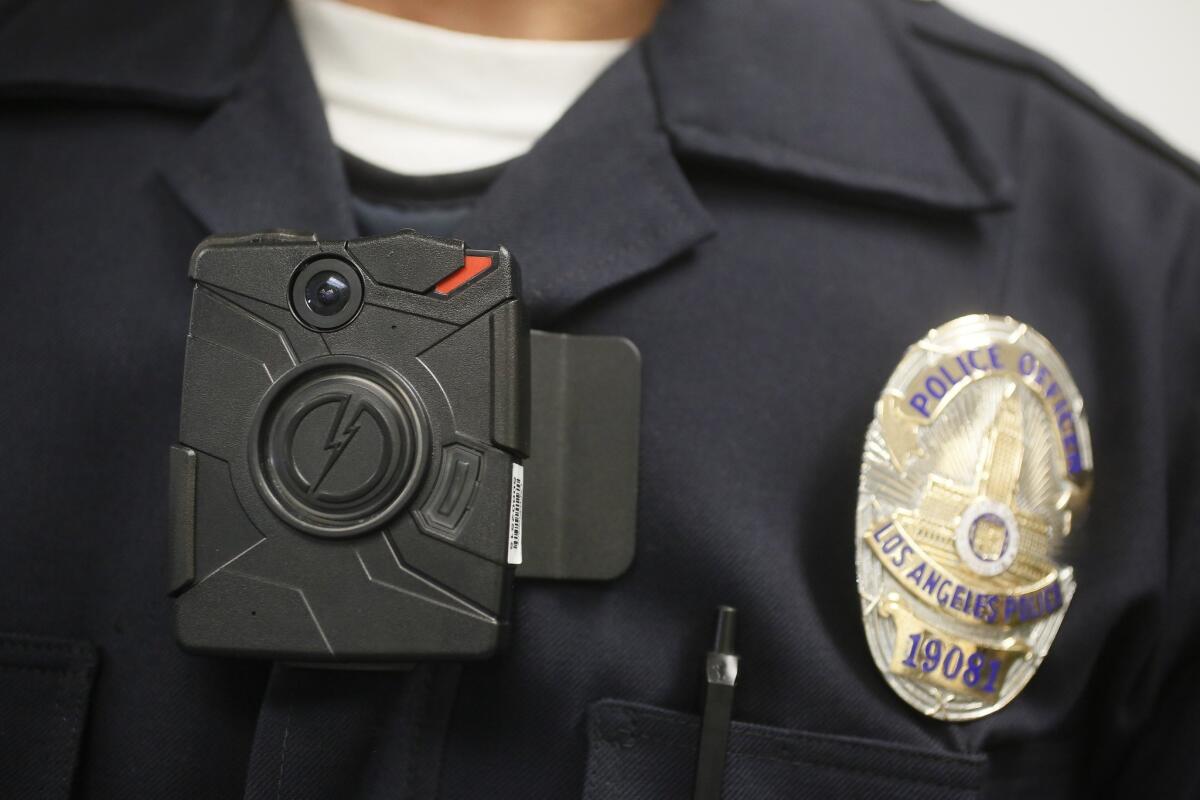Police consider use of body-worn cameras

A Los Angeles Police officer wears an on-body camera during a demonstration for media on January, 15, 2014 in Los Angeles.
Burbank police are considering cost, storage, labor and policy issues associated with body-worn cameras as they weigh whether to implement them in the department.
Police officials plan to seek input from the Burbank City Council on whether to pursue a federal grant of up to $250,000 to partially fund the program. The grant would include federal oversight and a requirement that the city sustain the program, which would cost $393,000 annually for maintenance and personnel, according to Burbank Police Chief Scott LaChasse.
That annual figure does not include the initial cost of purchasing the cameras.
The city would need a robust storage system, cohesive policies, and a sworn supervisor to oversee the program, along with any public records requests for the video, Burbank Police Capt. Mike Albanese said at a Police Commission meeting last week.
“What’s holding us up now are a whole litany of issues having to do not just with storage but with policy,” LaChasse said.
For example, he said it’s an open question as to whether officers would be allowed to review the video before making a statement during an official investigation. He also cited privacy issues when entering hospitals or a home while a child is inside, as well as when dealing with rape victims.
“All of that is going to require a lot of thought,” LaChasse said. “There are a lot of issues here and we’re kind of using other people as a beta test right now.”
While the Burbank Police Officers’ Assn. supports the introduction of the technology, President Jay Hawver felt other existing needs are more important, like filling 13 vacant sworn positions, restoring the seven positions lost during budget cuts over the last decade, and eventually replacing aging equipment like guns and Tasers.
“These items will come at a high cost as well, but are crucial in the safe performance of our duties,” Hawver said via email.
Roughly 140 police employees in Burbank already carry voice recorders, and the sworn personnel who have them — including all police officers, detectives, as well as all sergeants and lieutenants in the patrol and detective divisions — are mandated to record every interaction with any member of the public.
Burbank police were actually testing in-car video systems while developing a funding plan to purchase the equipment when body-worn cameras began to take hold, LaChasse said.
Albanese cited a report estimating that out of 18,000 police agencies in the United States, between 4,000 and 6,000 use body-worn cameras.
“What we’ll probably do is pass up the in-car video right now, unless we have a system that enables us to have in-car video that’s compatible with a body-worn camera,” LaChasse said.
Ideally, he said, the agency could implement a “hybrid” camera system that would include an in-car recorder that activated the body camera when the officer got out of the vehicle.
Glendale, meanwhile, is not pursuing body-worn cameras since nearly 60 police cars are equipped with in-car video systems, with cameras set up to capture the area in front of the car, as well as the back passenger seat, said Glendale Police Chief Robert Castro.
While the agency recently installed new cameras with better audio and video quality, Glendale has had in-car video systems for almost a decade, Castro said.
Plus, all sworn and civilian police employees wear digital recorders during contacts with the public, he said.
Castro shared similar concerns Burbank officials had about video storage, policy and staffing.
“There are so many unanswered questions,” Castro said. “I just have to look at what technology is right for Glendale.”